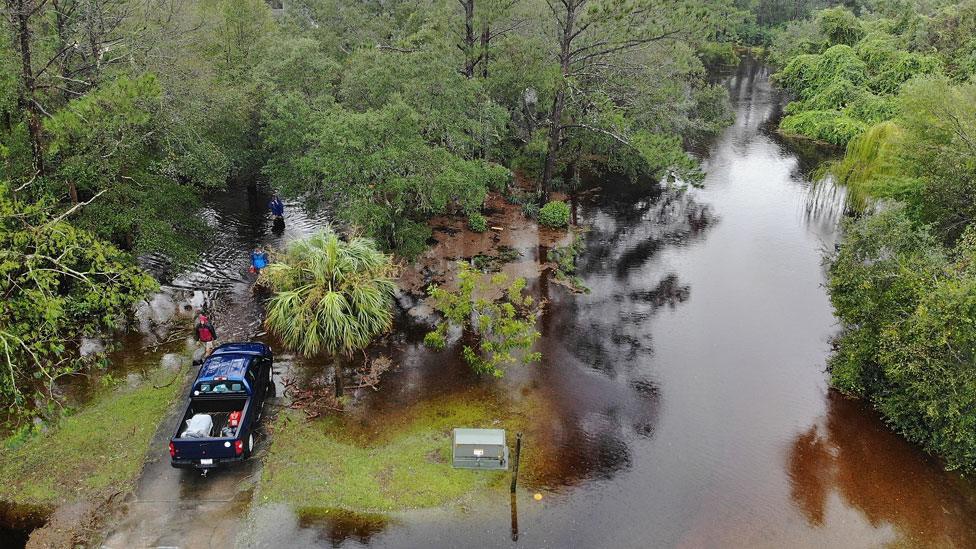Storm Florence: The impact in numbers
- Published

Storm Florence may have weakened but the full extent of the damage it has wreaked may not become clear for days. Here is a numerical guide to its power and impact.
Florence is 350 miles (560 km) wide and has travelled 4,000 miles across the ocean from west Africa.
There were 974,000 homes in the Carolinas without power on Saturday morning. Duke Energy, the area's biggest utility company, said that figure could rise to three million and restoring power could take weeks.
As much as 30 to 40 inches (76-102 cm) of rain could fall on coastal areas in North and South Carolina, the National Hurricane Center said. And there could be 10 inches (25 cm) in south-western Virginia.
Some towns have already had over 2ft (60cm) of rain, and forecasters warn that totals could hit 3.5ft (1m).
In New Bern, North Carolina, the National Weather Service said there was 10ft of water. About 400 people have been rescued.
Florence was packing 120mph winds (193km/h) on Thursday but weakened from a Category 3 hurricane to Category 1 before it hit the coastline on Friday. The eye moved from sea to land at Wrightsville Beach in North Carolina. Now its maximum sustained winds are about 50mph (80km/h) and it's a tropical storm.
It's moving very slowly, at about 2mph (3.2km/h).
About 10 million people could be affected by the storm as it moved further inland in the days ahead.
The death toll is at least twelve. The casualties include a mother and baby who were killed when a tree fell on their home in Wilmington, North Carolina.
More than 300 volunteers from nine US states have joined the relief effort in North Carolina, . They are part of Cajun Navy which is an informal volunteer group set up after Hurricane Katrina. Many of them are boat owners, who help rescue stricken flood victims.